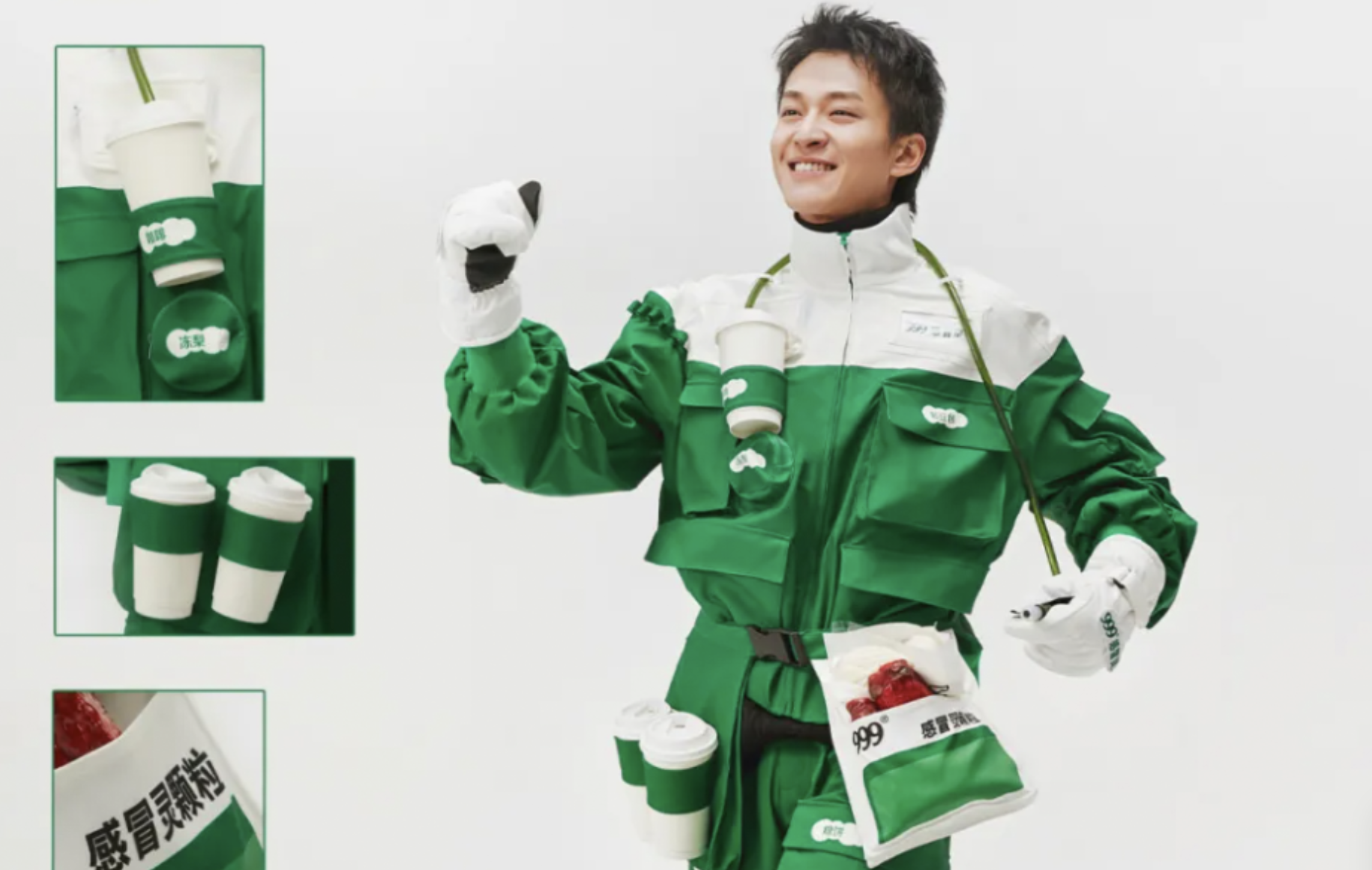The rise of robots in China: what it means for marketers

There are parts of China where you’d be forgiven for thinking you’ve stepped into a sci-fi film set in 2076. Futuristic cityscapes hum with electric vehicles zipping through the streets, people seamlessly paying with a nod, and digital screens flooding every corner with dynamic advertisements. But you ain’t seen nothing yet!
Robots are the next big leap forward
The next step into the future? Robots. And they may arrive sooner than you think.
Anyone who has stayed in a Chinese hotel has likely encountered delivery robots, efficiently bringing meals to guest rooms. Some restaurants are now using robot chefs and servers, preparing and delivering daily staples. On city streets or at trade shows, you might have spotted a ¥9,999 ($1,380) Xiaomi Cyberdog or its successor, the sleek robotic pet offering a glimpse into the consumer robotics future.
But the biggest reason for China’s robotic acceleration isn’t novel or gimmicky, it’s about future-proofing the country.
China’s demographic time bomb: why robots are necessary
With an aging population and a shrinking workforce, robots are being rapidly developed to fill labour shortages. It won’t be long before they are dominant in factory assembly lines, elderly care homes, and even retail and marketing.
Robotics is a key focus of China’s "Made in China 2025" industrial strategy, with billions being invested in automation and AI-driven machines by both the government and private companies. And as we’ve seen with many manufactured categories in China – mass production = lower costs.
A recent Bank of America study forecasts that China’s robotics industry will mirror its electric vehicle (EV) success, with prices expected to drop 70% to just $17,000 per unit by 2030. As this happens, humanoid robots will shift to the mainstream in China.
Robots are already coming to the fore in China
We caught an early glimpse of this in January’s Spring Festival Gala, where android performers garnered a record-breaking 2.8 billion views. Since then, similar robots have become available for rent on platforms like Alibaba’s Xianyu, costing anywhere from a few hundred to tens of thousands of yuan for use in promotional events, exhibitions, and store openings.
China is poised to become the first mass-adoption market for robots. Just as Chinese consumers embraced mobile payments, e-commerce, social commerce and EVs ahead of the West, they will be among the most open to having robots as part of the marketing mix.
How will robots become relevant in marketing?
Some brands already use robots for backend tasks such as in warehouses and manufacturing. Adoption of this type of robot is becoming increasingly necessary and expected, to ensure swift and cost efficient fulfilment of orders. With the increasing need for personalisation, these robots will need to be integrated with consumer-facing touch points, to fulfil personalised orders that Chinese consumers are increasingly demanding.
At the front-end, the early adoption of robots presents numerous opportunities for branding, customer experience, and storytelling. Yet the use of robots needs to go beyond gimmicky and add value to consumers’ customer journey – whether it be functional or emotional value.
So what next for brands in China?
Due to their tactile nature, robots provide another dimension to connect with consumers beyond virtual influencers, as customers are able to meet them in real life. This can be at exclusive events, to avatars for customer support. It can even be brand ambassadors in store, linked to advanced CRM systems to deliver hyper-personalised service, and respond to emotions like Huawei’s new smartphones.
Chinese consumers embrace brands that push the boundaries of innovation. Brands should run with this and have some fun. At a new whisky launch, a robot bartender could be mixing cocktails while projecting the brand heritage story across the bar. For fashion brands, robotic mannequins can adjust outfits in real time based on store analytics, the weather, or the customer they are speaking to. Robotic brand mascots can engage and entertain consumers with tricks and interactive storytelling.
Brands shouldn’t wait until 2030 to embrace robotics – the technology is already here. Now is a good time to experiment, innovate, and earn consumer goodwill for being ahead of the curve. Those who start now will be better positioned to compete with China’s fast-moving domestic brands both in China and abroad.
Remember, robots aren’t just about backend automation. Chinese consumers are far more open to interacting with AI and robots than those in any Western market. Take advantage of that. And to ensure your robots are relevant, resonant, and take advantage of the latest tech, talk to China Skinny.
Robots are coming to China and will likely be the next big addition to the marketing mix
Mixue is now the largest fast food chain in the world by stores. It hasn’t got there by following the Western outsourcing model, rather building on a structure that takes advantage of China’s unique infrastructure
This could quite possibly be our favourite marketing campaign in China yet, transitioning a cough medicine brand into a fashion powerhouse, incorporating user generated content, community and corporate welfare
Blind boxes are redefining value, experience, and ethics in consumption. The intersection of affordability, gamification, and sustainability is a powerful formula that brands can learn from and adapt.
Despite being winter, Naimi's novel fried chicken-looking ice creams are flying out of the chiller. Their success provides many valuable lessons for brands selling in China
Why DeepSeek’s new app may alter the path of geopolitics and economies globally, and play a big part in marketing in China
AI has become an integrated tool for marketing in China 2025, making marketing easier at a surface level, but harder than it has ever been before. How do brands utilise AI to stand out?
From adapting flavours to creating viral moments, Oreo has continually evolved to meet the changing tastes and lifestyles of Chinese consumers, transforming the foreign brand into a household favourite.
Highlights of a study proposing solutions for the evolving landscape of China's consumer market amidst economic uncertainties and shifting consumer behaviours.
As the typically unexciting pharma industry proves, packaging innovation can breathe life into even the most mundane product categories.
How are China's blind box phenomenon and innovative product strategies are reshaping consumer behavior? Learn how brands can stay relevant in China's fast-paced market with creative, cost-effective approaches to meet evolving demand.
A softening ad spend market in China reveals some changes in priorities across online platforms and shifts in spending from major categories
China's seniors are one of the most anticipated demographics, yet one of the least tapped by foreign brands. Preferences, behaviour and influences are all changing, helping to make them more accessible for foreign brands
Although summer has come to an end in China, the enthusiasm for ice cups remains strong. Coffee ice cubes and fruit-flavoured ice ball cups have further encouraged people to explore DIY mixers and enhance their beverage experiences.
Traditionally, yoghurt has been seen as a symbol of purity, health, and deliciousness. But what would happen if we blended it with the flavours of some famous regional Chinese cuisines?
Founded in 2017, M Stand has continually evolved with its unique aesthetic and comprehensive innovations, positioning itself as more of a lifestyle brand than a coffee chain.
On September 10, 2024, Apple and Huawei held events on the same day to unveil their flagship products: the iPhone 16 series and the Mate XT Master Series. The impressive presentations left people in awe and suggested that the battle for high-end smartphones in China might just be getting started.
You can now book an at-home milk tea service! In Chengdu and Suzhou, some milk tea shops are launching this new service. What is driving the popularity of this new service?
The drivers for being part of a community are more pronounced in China. This is seeing brands connecting consumers with a shared interest in engaging ways online and offline through events and partnerships, to build emotional connections so to reply less on price-based competition
This summer, the combination of mint and chocolate has become a trending flavour in China following its popularity in other countries. Various brands are introducing mint chocolate-flavoured products in drinks, ice cream, bakery and cakes.
As Chinese Valentine's Day, Qixi Festival (七夕节) conveys Chinese-style unique romance between lovers and couples. Check it out to see how brands are embracing this traditional festival in creative ways.
China has an estimated 330 million female gamers, accounting for nearly half of the gaming population. This year, the commercial potential of Otome games—romance simulation games designed for female players—has become evident. Many brands, from food to beauty, have started collaborations with Otome games.
Chongqing pipped Guangzhou as China's forth biggest city economy. The megacity presents significant opportunities, but it requires marketing localised for the for the city's unique consumers and environment
Despite the Paris Olympics getting mixed reviews in China so far, the opportunities for brands to align with sports to connect with consumers is large, and growing
The opening ceremony of the Paris Olympics, along with other parts of the Games, hasn’t been without controversy, but Chinese brands like Yili, HEYTEA and Kuaishou have capitalized on the interest of the spectacle to launch impressive marketing campaigns.
Thai milk tea has successfully carved out a niche in China’s ever-evolving milk tea market. Despite its high sugar and milk content, how does it manage to stand out in an increasingly health-conscious market? Read on to find out more…
Have you watched the hit TV series The Tale of Rose that premiered this June? High-quality TV series like these offer a fantastic opportunity for brands to achieve their marketing goals in China. Check it out to see how they help brands make an impact.
Too many Chinese marketing strategies revolve around expensive KOLs and livestreamers, but brands are increasingly getting lower-cost cut through with clever and creative initiatives
Brands are exploring new advertising media. From airport luggage conveyor belts, bed sheets hanging on balconies to sewn-in labels, you might be surprised by their creativity.
Beyond weekend getaways and rural lifestyle choices, brands like Adidas are weaving rural narratives to forge deeper emotional bonds





























